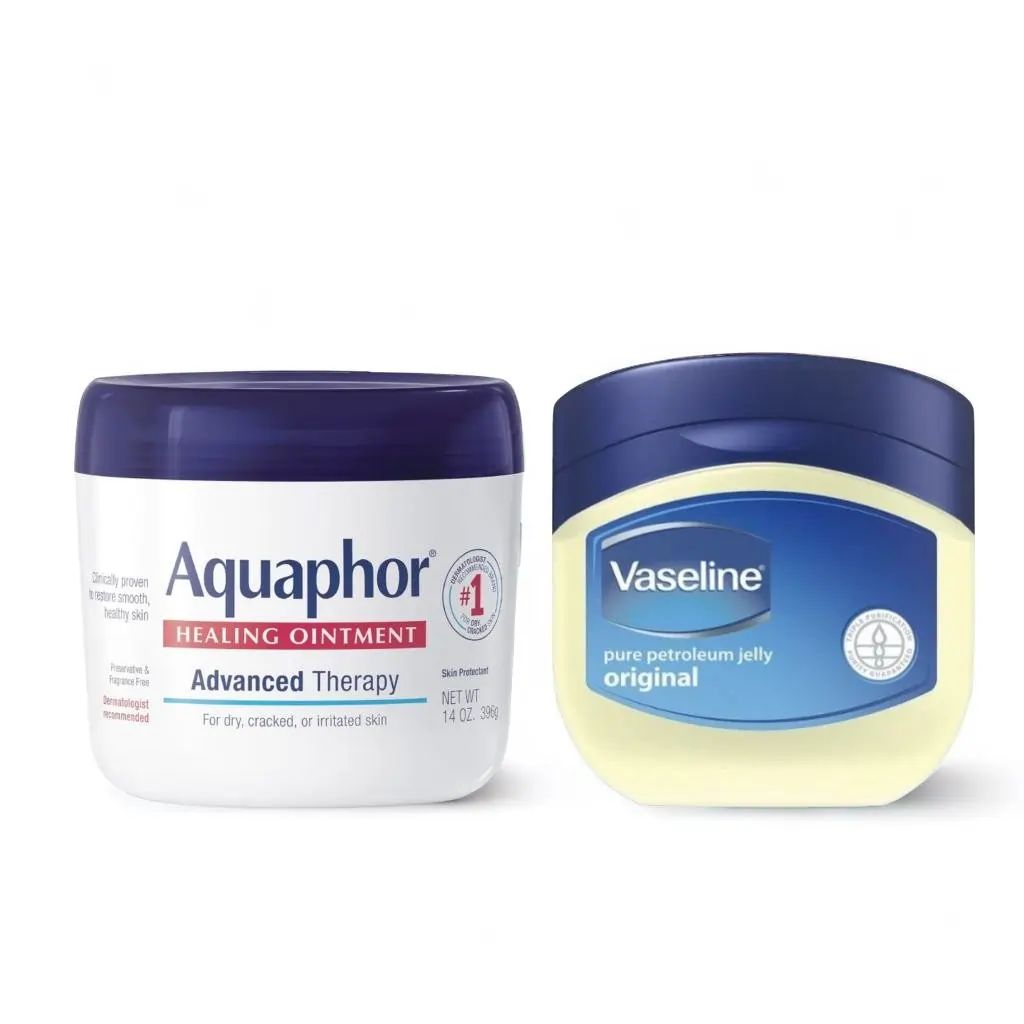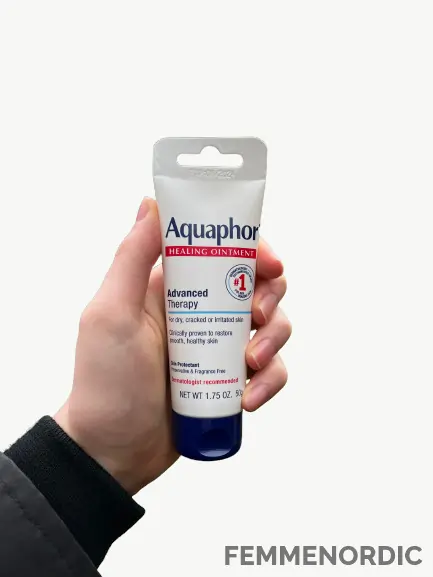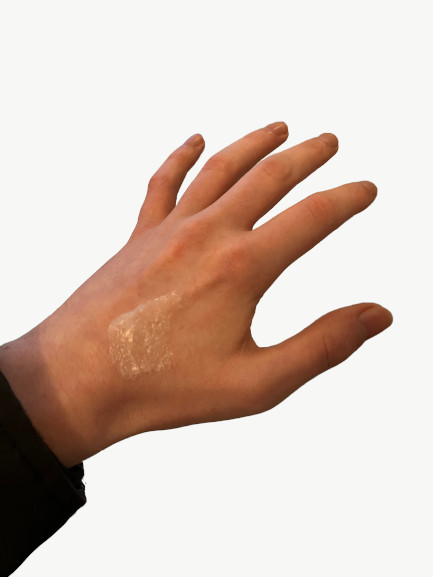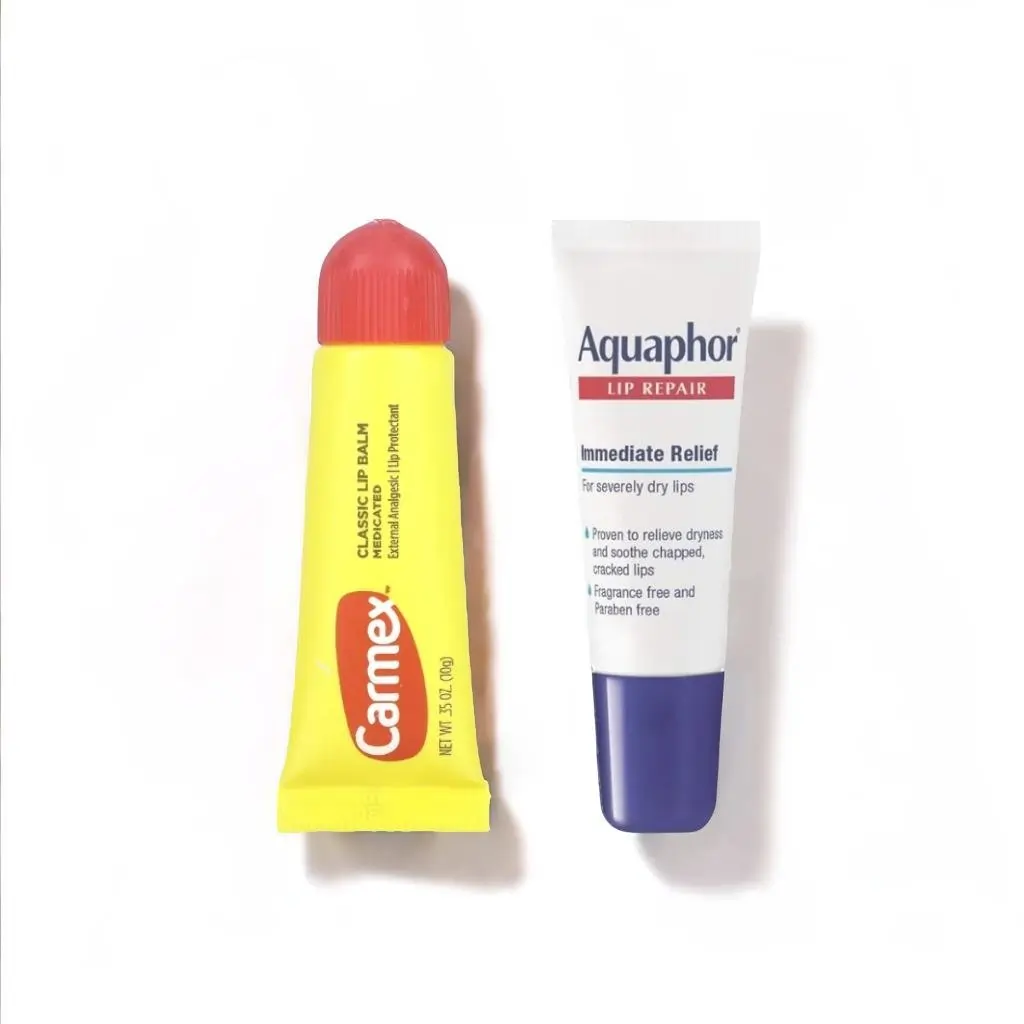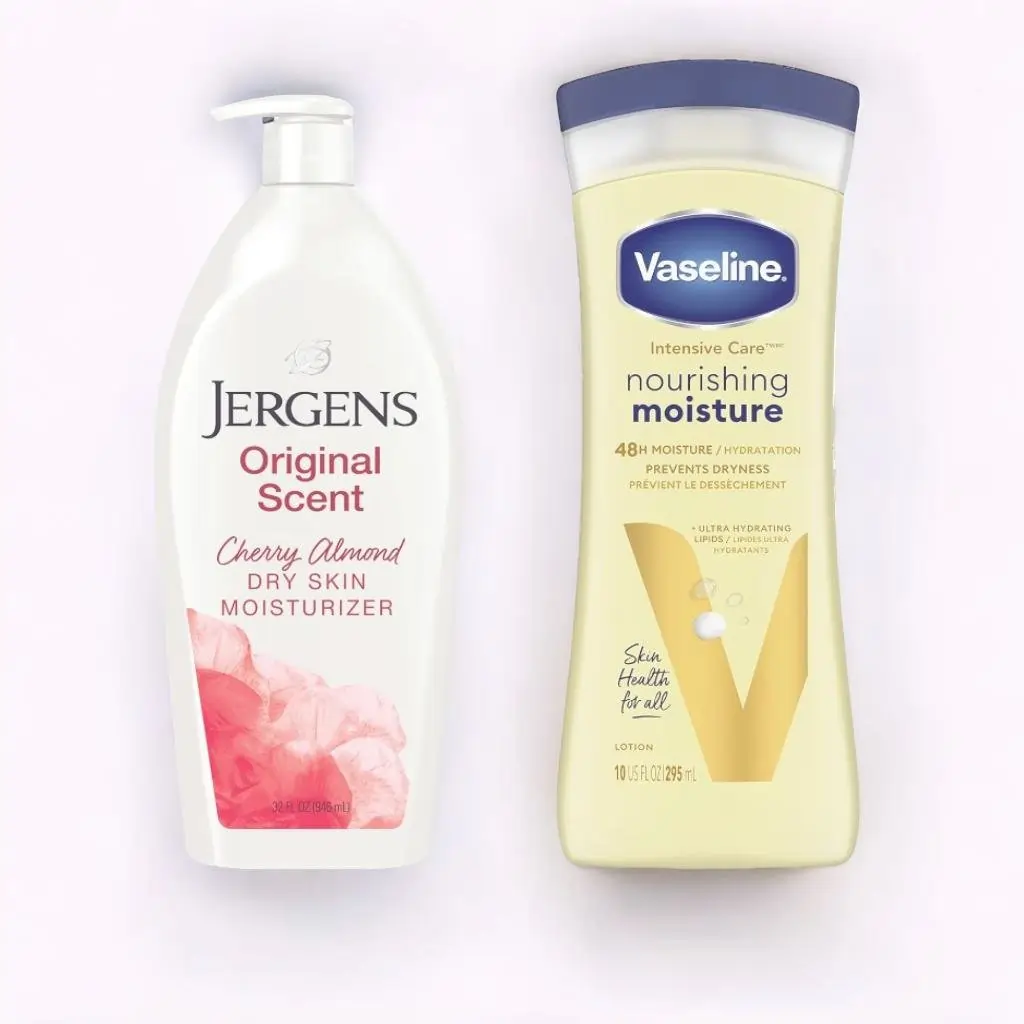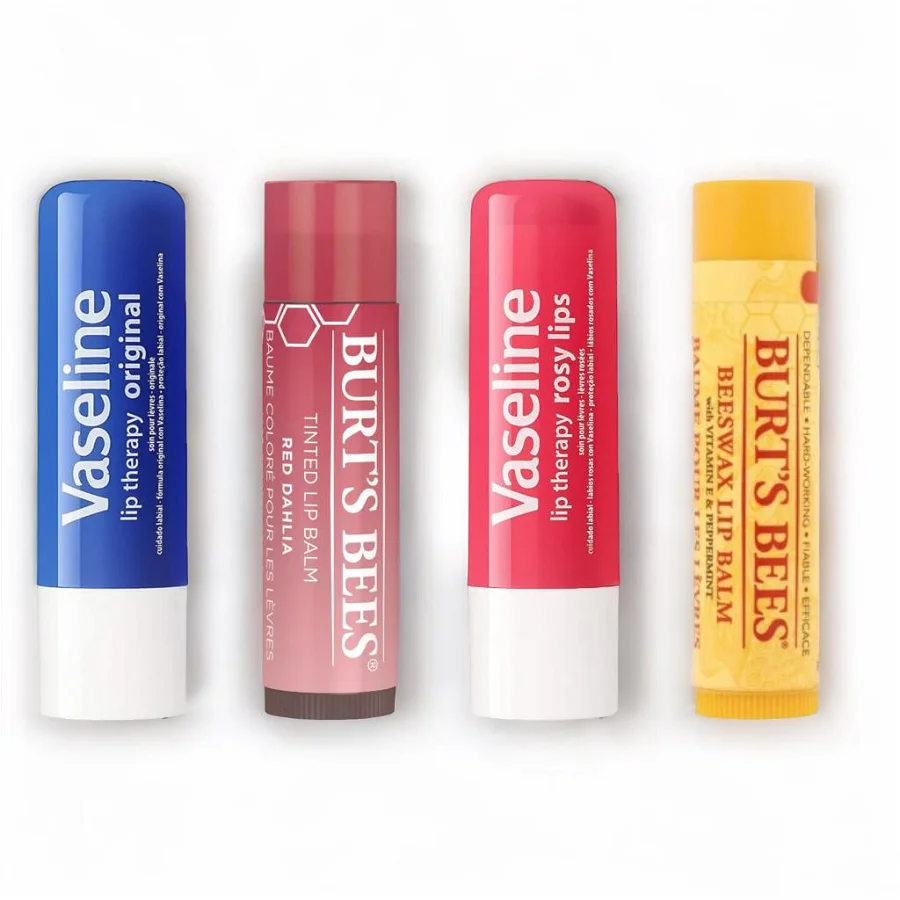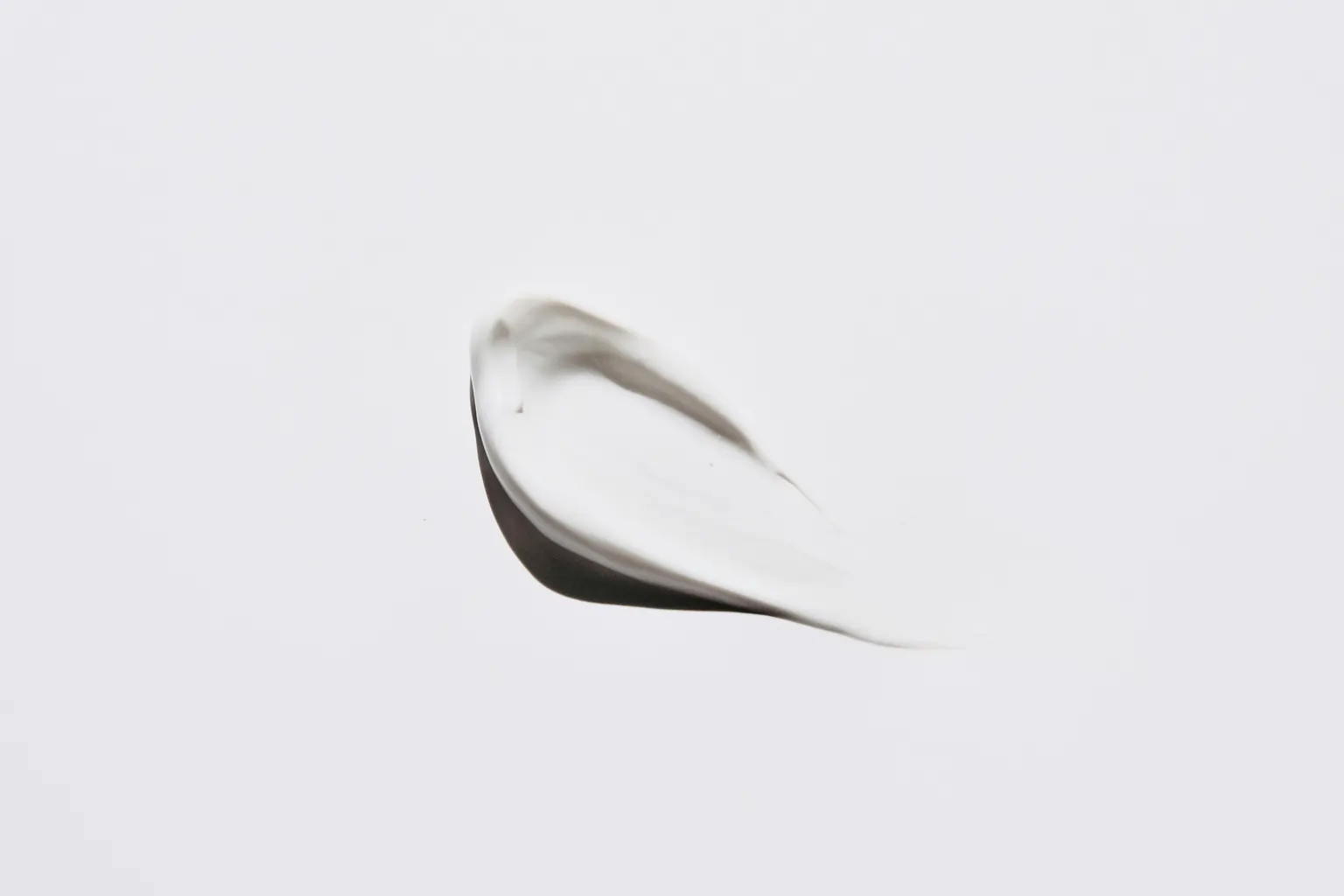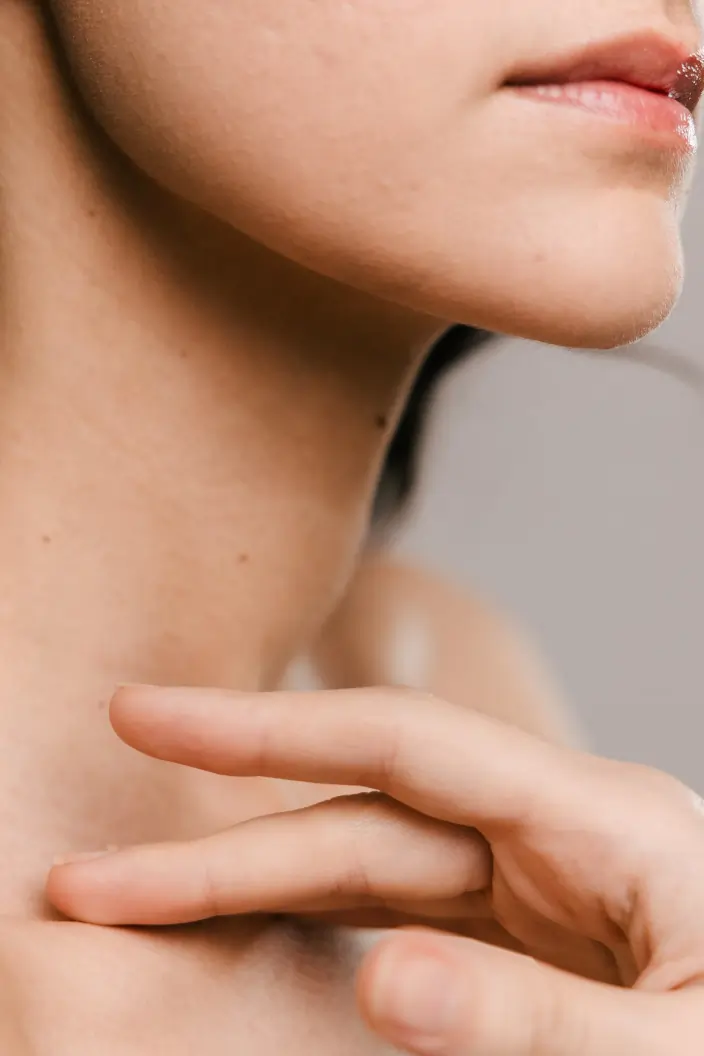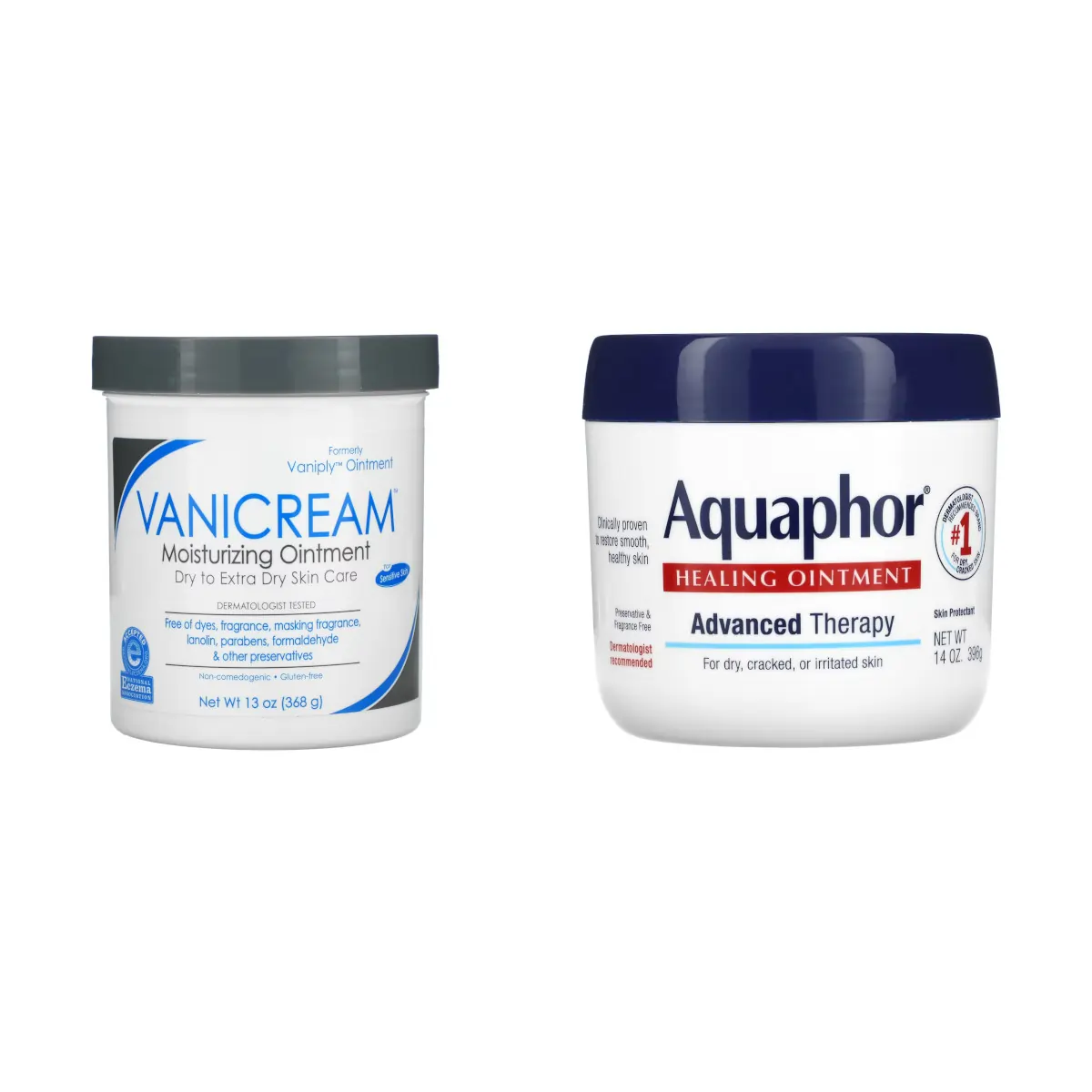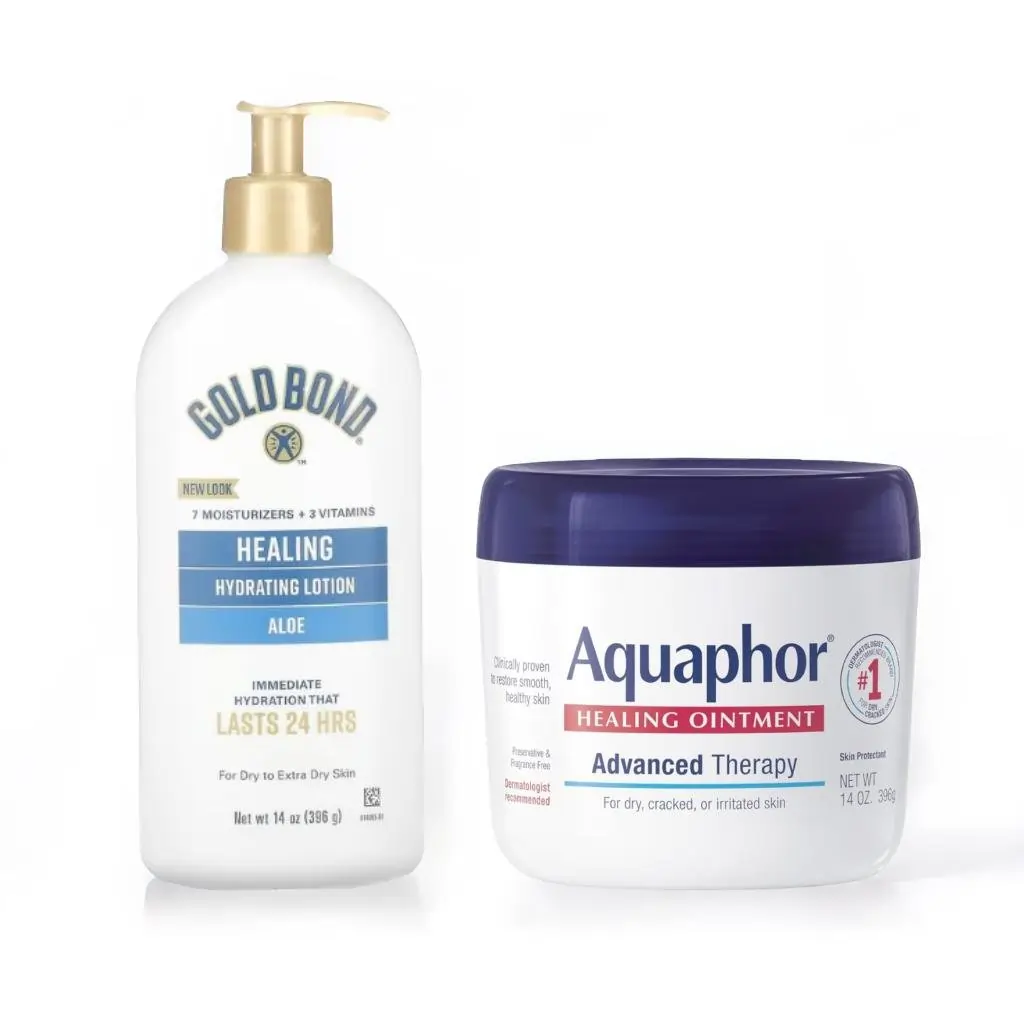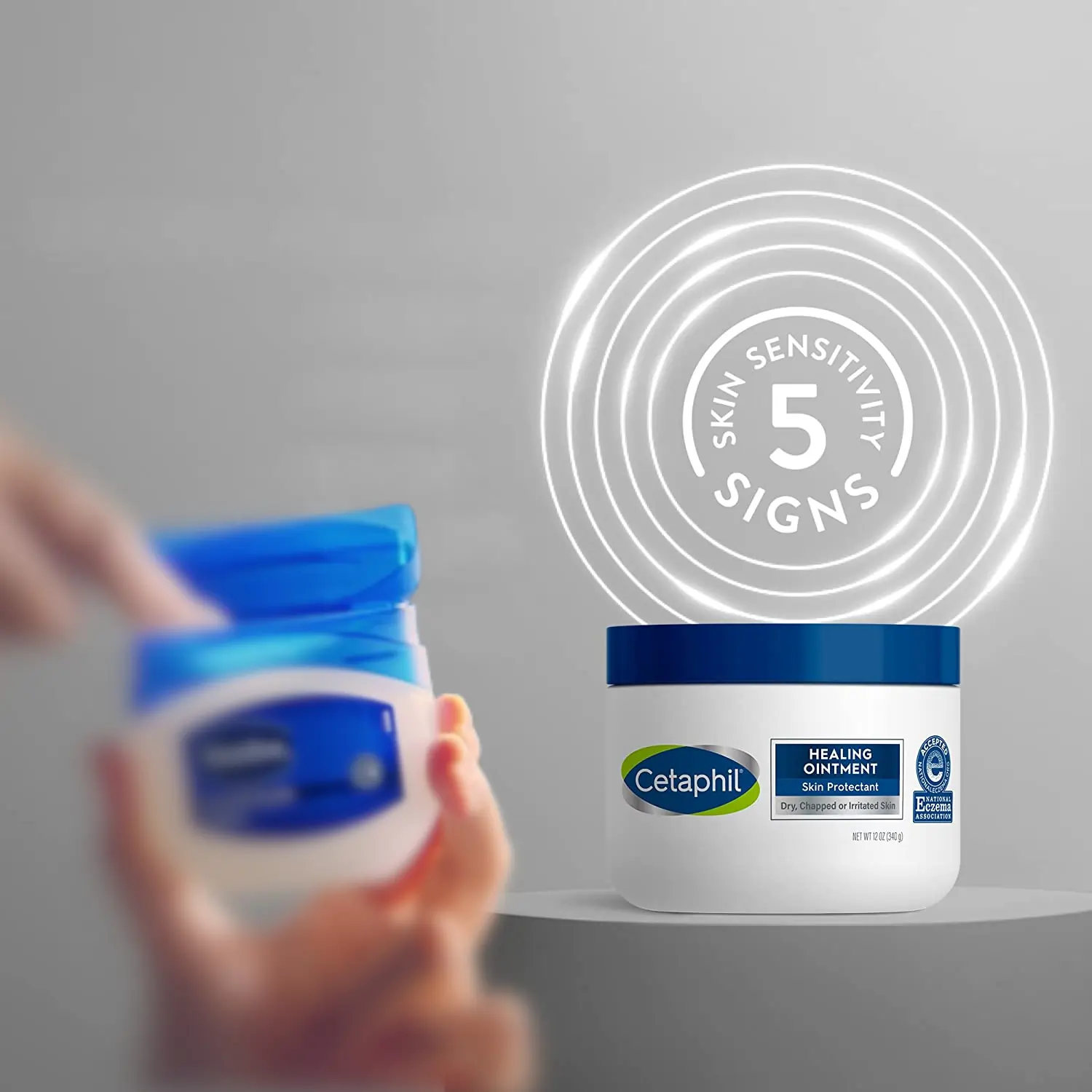
When you think of petroleum jelly products, two names instantly spring to mind: Aquaphor and Vaseline. Famed for their best-selling skin protectants (among other products, of course), both brands are more than worthy of occupying some shelf space in your bathroom.
Come with us as we compare the two side-by-side to help you decide which is best for you and your skin. Enjoy!
Aquaphor Healing Ointment vs Vaseline Pure Petroleum Jelly
Petrolatum, more commonly referred to as Petroleum Jelly, is a hypoallergenic, non-comedogenic, jelly-like ingredient that helps to protect and hydrate skin, fight free radical damage, and reduce wrinkles. It isn't absorbed by the skin, so it sits on top acting as a barrier to keep dirt out and more importantly keep moisture in.
The Vaseline Original Petroleum Jelly formula consists of 100% petrolatum and doesn't contain any other ingredients—not even water.
Aquaphor's Healing Ointment, on the other hand, only contains around 41% petrolatum, with the remaining 59% being made up of: mineral oil (smooths and softens skin), ceresin (improves texture), lanolin alcohol (helps defend against moisture loss), panthenol (skin protectant with anti-inflammatory properties), glycerin (relieves skin dryness), and bisabolol (soothes).
What can they be used for?
This distinction in formulas drastically changes what each product can be used for, and what they are best at:
-
Skin protectant: a thin barrier or layer of either product can be applied to damaged skin or to skin which is at risk of damage.
-
Slugging: both products form a film or barrier to prevent water loss - perfect for those with dry/dehydrated skin.
-
Regular moisturizer: because Aquaphor contains humectant ingredients like glycerin, it can also pull moisture in from the environment, rather than just trapping existing moisture like Vaseline.
-
Lip care: both products are good at treating the thin skin of our lips, however, Aquaphor can restore moisture to lips that are already dry, whereas Vaseline can only prevent dry lips. Aquaphor ✓ (restorative) Vaseline ✓ (preventative)
-
Eyelashes: given that both products are safe to be used around the eyes (and the fact that they're both designed to seal in moisture), both can actually make your lashes look healthier, thicker, and fuller with just a thin coat.
-
Wound healing: a 2013 study found that wounds treated with Vaseline had a lower incidence of redness when compared to wounds treated with Aquaphor.
-
Tattoos: Aquaphor is recommended for tattoos because of its anti-inflammatory properties; Vaseline blocks air from getting to the tattoo (which is needed for healing).
-
Treat sunburns: neither Aquaphor nor Vaseline should be used to treat sunburns as they actually trap heat.
It's worth noting that the additional benefits granted by Aquaphor's Healing Ointment comes with a price tag which is around double that of Vaseline's per ounce. It's also worth noting that because Aquaphor contains lanolin, you must ensure that you do not have a lanolin allergy before using it.
Aquaphor
Given that Aquaphor contains a mix of occlusive, emollient, and humectant ingredients, it seems as though it should feel more akin to a regular moisturizer. In reality, the texture is just as thick and greasy as Vaseline (despite containing more than just petroleum jelly, as previously discussed).
Though it won't clog pores—and certainly shouldn't exacerbate or cause acne given its non-comedogenic formula—if you have naturally oily skin then using Aquaphor might actually cause your skin to retain excessive amounts of moisture.*
*While excess moisture sounds like it should be a good thing, unfortunately it can cause what's known as 'maceration'. Macerated skin looks lighter, wrinkly and is more susceptible to breaks and tears. As with all things in life, moderation is key; a thin layer of anything that occludes the skin (such as Aquaphor or Vaseline) is more than plenty.
One of the most frequently asked questions surrounding Aquaphor is how to wash it off. Since it is an oil-based product (i.e. not soluble in water), you can't expect to just be able to rinse it off. A gentle cleanser will do the trick, though.
Pros
Contains humectant ingredients for moisture
Cons
Contains lanolin - allergy risk
What makes it special? One essential solution for many skincare needs: Aquaphor Healing Ointment is uniquely formulated to restore smooth, healthy skin. Different from a lotion or cream, this multi-purpose ointment protects and soothes extremely dry skin, chapped lips, cracked hands and feet, minor cuts and burns, and many other skin irritations, so you can get on with your day comfortably.
Vaseline
As has been well and truly established by now, petroleum jelly products such as Vaseline are occlusive, meaning they form a protective and impenetrable layer on the surface of your skin. This is evident in the texture of it alone, with it being notoriously thick and greasy.
One major concept to understand, though, is that skin occlusion is very much a double-edged sword. While an impenetrable layer helps to trap moisture in the skin, it also traps in everything else, too. So, if you're applying something potentially irritating underneath (such as retinol, or other potent actives), it can actually cause more irritation.
Further to this point, the use of petrolatum alone may actually do more harm than good because it causes your skin's own repair enzymes to be impeded. This is why for the purposes of slugging, Aquaphor is probably the better choice of the two (unless you have a favorite moisturizer containing skin barrier repairing lipids—such as those by CeraVe—that you're wanting to use underneath Vaseline instead).

Vaseline Cleansing 1 Blueseal Pure Petroleum Jelly Original 100ml
The original skin protectant that's been used to protect and help heal dry skin since 1870.
Pros
100% petroleum jelly formula
Cons
May impede skin repair enzymes
What makes it special? The original petroleum jelly from Vaseline is triple-purified, hypoallergenic and dermatologically tested, and is ideal for a multitude of uses, including as a moisturiser for sensitive skin or as a lip balm.
Final thoughts
All in all, we love them both, but clearly they both have their pros and cons:
Because Vaseline Pure Petroleum Jelly contains 100% petroleum jelly, it is super cheap and is best suited for lip care, healing wounds, softening cuticles, and as an occlusive to prevent moisture loss (popularly known as slugging).
Since the Aquaphor Healing Ointment contains ingredients other than just petroleum jelly (such as glycerin, panthenol and bisabolol) it boasts humectant properties, making it a better moisturizer than Vaseline. It is also better suited for treating tattoos, and marginally better for lip care. However, you should steer clear if you have a lanolin allergy.
